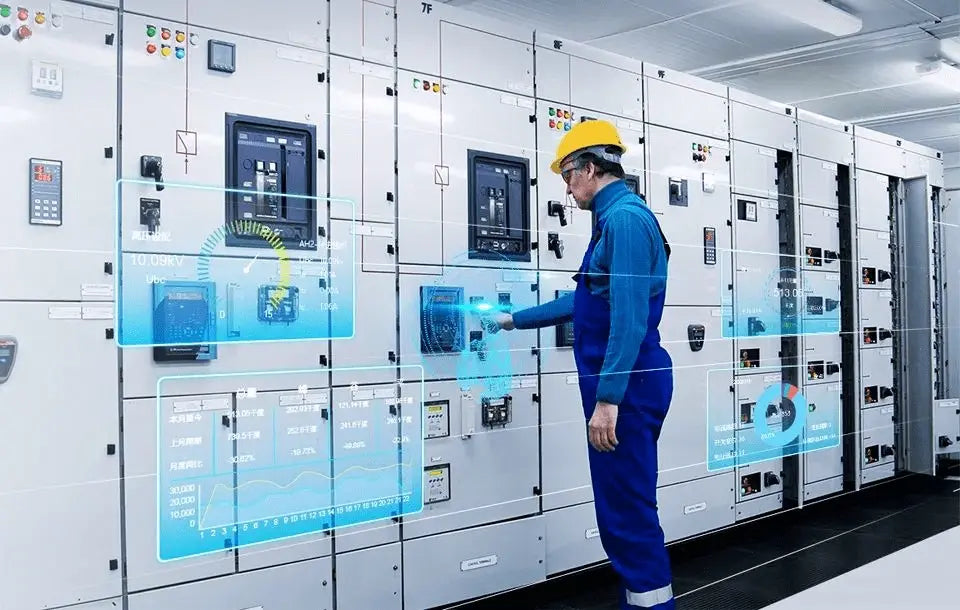
Deep Integration With DeepSeek: The Evolution Of AR Glasses from "Extended Display" to "Spatial Cognition Co-Processor"
Aktie
With the integration of DeepSeek's advanced AI capabilities, AR glasses will transcend the interaction boundaries of traditional AR devices, evolving into a "Spatial Intelligence Hub." This transformation can be summarized across three key dimensions:
A. Hyperdimensional Perception & Dynamic Environment Adaptation
1. Real-Time Spatial Semantic Deconstruction
l By integrating millimeter-wave radar with computer vision, AR glasses enable "material tactile prediction." For example, when scanning a wooden table or chair, they can automatically annotate weight limits and display a floating alert: "Avoid placing items over 15kg here."
l Dynamic Heatmap Rendering: In a meeting room, AR glasses can automatically map the optimal airflow trajectory of air conditioning vents. Using AR airflow arrows, they guide individuals to seating areas that avoid direct exposure to cold air.
2. Multimodal Environmental Adaptation System
l Intelligent Lighting Compensation: When reflections from subway windows are detected, the system automatically enhances AR interface contrast and switches to privacy mode for secure viewing.
l Directional Sound Field Enhancement: In noisy exhibition settings, the system utilizes bone conduction technology to deliver the speaker’s voice directly while suppressing background noise frequencies for clearer communication.

B. Cognition-Augmented Interaction Paradigm
1. Spatial Mind Mapping Engine
l When architects view BIM models, they can use gestures to "peel" the building’s exterior, and DeepSeek instantly generates a holographic visualization of the structural stress distribution.
l In medical training scenarios, anatomical models automatically highlight the muscle groups being discussed according to the lesson's progress and link to clinical case videos, which are displayed in a floating format for enhanced learning.
2. Cross-Dimensional Information Integration
l In financial data analysis, the system transforms 2D candlestick charts into 3D fluctuation surfaces.
l While reading eBooks, key concepts are automatically transformed into 3D demonstration models (for example, quantum entanglement can be visualized as a dance of glowing particle pairs).

C. Embodied Intelligence Collaboration Network
1. Spatial Collaboration Protocol
l During remote repair guidance, the screw rotation angles marked by the expert are converted into haptic pulse feedback on the local AR device.
l In multilingual conference settings, the speaker’s voice is transcribed into real-time text captions, which are then projected in corresponding directions based on the location of participants speaking different languages.
2. Adaptive Interface Ecosystem
l Multi-Screen Management System: In a café setting with three virtual screens, DeepSeek automatically positions the code editor in the primary field of view, places reference materials floating above the latte cup, and folds the communication window into a badge shape.
l Context-Aware Noise Reduction: When the system detects that the user has started programming, it automatically reduces the visual impact of social media notifications, transforming them into subtle edge breathing light cues.

D. Breakthrough Capabilities for Specialized Scenarios
1. Industrial Maintenance Enhancement
l When inspecting a distribution box, the AR interface automatically highlights areas with abnormal temperature differences and overlays a cloud map of the failure rates for similar equipment over the past three months.
l In oil change guidance, the virtual dipstick adjusts its color according to the real-time oil level, while AI compares historical data to predict the remaining lifespan of the oil.
2. Cognitive Revolution in Education
l During chemistry lab instruction, hazardous operations trigger a virtual leakage demonstration, and molecular motion models can be scaled down to the quantum level for observation.
l In artifact appreciation scenarios, AR projections of bronze vessels can "peel away" the rust layer to reveal their original casting appearance, while simultaneously projecting X-ray scans of their internal structure.

